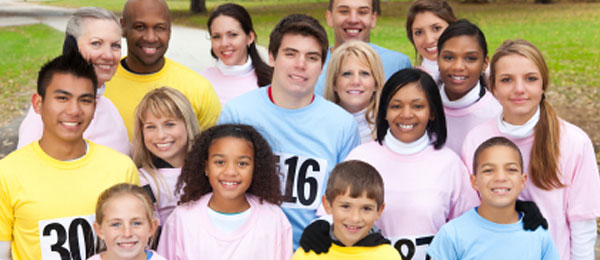
Knowing where a population lives, its size and unique characteristics help a community tailor current programs and services and plan for its residents’ future population health needs.1
Middlesex-London Health Unit is located in Southwestern Ontario. These are the traditional lands of the Attawandaran (Neutral) peoples who once settled this region alongside the Algonquin and Haudenosaunee peoples.2 The three First Nations communities with longstanding ties to this geographic area are: Chippewa of the Thames First Nation (Anishinaabe), Oneida Nation of the Thames (Haudenosaunee); and Munsee-Delaware Nation (Leni-Lunaape).
Middlesex-London, as referred to in this resource, is the region served by the Middlesex-London Board of Health. It includes the residents of the City of London and the County of Middlesex. To the extent that the data sources permit, urban Indigenous populations are included in this resource as are the residents of the neighbouring First Nations communities. The most recent, comprehensive, demographic data available at the time of this report is from the 2016 Census of Canada.
Middlesex-London covers 3,317 square kilometers; a relatively small land area compared to other health units with a relatively large population of 455,526 people in 2016. Nine out of 10 people in Middlesex-London live in urban areas, predominately London and Strathroy.
All age groups are predicted to grow over the next 25 years but those aged 65 years and older will nearly double by 2041. This will increase the percent of seniors who may be dependant on the working age population, which is now at 28 seniors (65+) to every 100 adults aged 20 to 64 years. It will potentially create a heavier draw on health and social support services in the future. The overall growth rate in Middlesex-London between 2011 and 2016 (3.7%) was lower than in Ontario (4.6%) and much lower compared to previous years (12.9% from 2006 and 2011). The projected growth rate between 2016 and 2041 for Middlesex-London (26.1%) is slightly lower than Ontario overall (30.3%). Local population growth will be largely driven by longevity of the population and in-migration rather than birth rate.
Diverse family structures exist in Middlesex-London. Over a quarter of residents aged 15 and older live as a couple with children at home and just over another quarter live as a couple without children at home. Just over three-quarters of children live in a couple family (including complex or blended families). The percent of adults aged 15 and older that do not live with family is higher in Middlesex-London (23.0%) compared to Ontario (19.3%). A sub-category, those living alone, is higher in Middlesex-London (15.4%) compared with Ontario (12.2%).
Middlesex-London includes many urban Indigenous people. About 11,145 (2.5%) of the population of Middlesex-London in 2016 reported being Indigenous, primarily First Nations or Métis. However, the percent could be much higher as many Indigenous people in Middlesex-London did not participate in the census.3
There are signs of increasing ethnic diversity in Middlesex-London although it lags behind Ontario overall. Approximately 1 in 5 people in Middlesex-London are immigrants. Over one in ten immigrants in Middlesex-London are recent immigrants (12.9%) which is now similar to Ontario (12.3%). The percent of people who belonged to a visible minority group in Middlesex-London also increased in 2016 (17.0%), up from 11.7% in 2006, but much lower than Ontario in 2016 (29.3%). The largest visible minority groups in Middlesex-London were Arab, South Asian, Black, Chinese and Latin American. While 9.0% of the population reported speaking a language other than English or French at home, only 1.4% of the population of Middlesex-London was unable to communicate in one of the official languages.
References:
1. Grundy E, Murphy, MJ. Demography and public health. In: Detels R, Gulliford M, Karim, QA and Tan, CC, editors. Oxford Textbook of Global Public Health 6th ed. Oxford UK: Oxford University Press, 2015 [cited 2018 Nov 27]. pp. 718-735. Available from: http://eprints.lse.ac.uk/id/eprint/63076 doi.org/10.1093/med/9780199661756.003.0126
2. Ontario Federation of Labour Aboriginal Circle and Ontario Federation of Labour Aboriginal Persons Caucus. Traditional Territory Acknowledgements in Ontario [Internet]. Toronto ON: Ontario Federation of Labour 2017 [cited 2018 Nov 22]. Available from: www.ofl.ca/wp-content/uploads/2017.05.31-Traditional-Territory-Acknowledgement-in-Ont.pdf
Last modified on: January 25, 2019